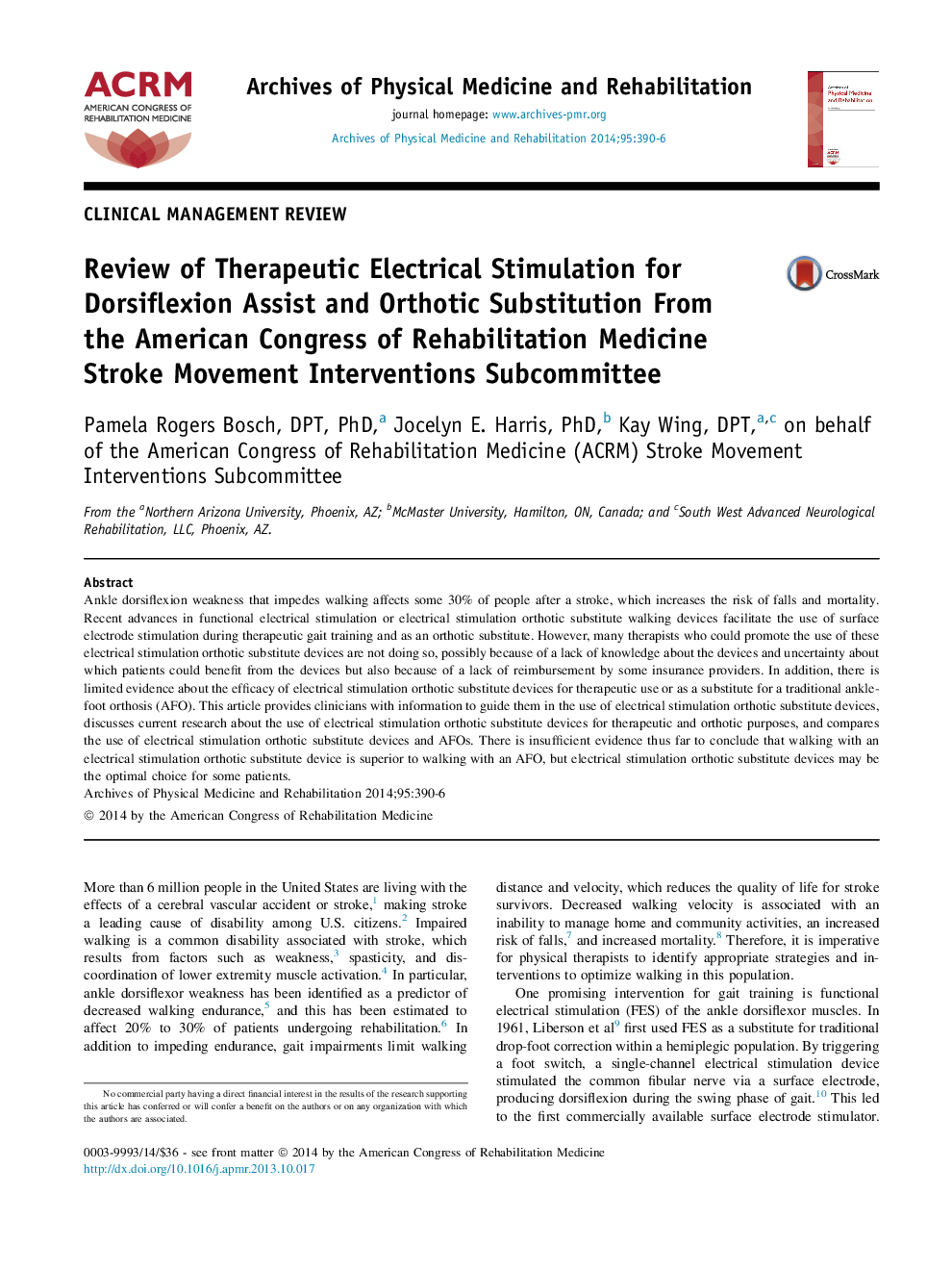| Article ID | Journal | Published Year | Pages | File Type |
|---|---|---|---|---|
| 3449053 | Archives of Physical Medicine and Rehabilitation | 2014 | 7 Pages |
Ankle dorsiflexion weakness that impedes walking affects some 30% of people after a stroke, which increases the risk of falls and mortality. Recent advances in functional electrical stimulation or electrical stimulation orthotic substitute walking devices facilitate the use of surface electrode stimulation during therapeutic gait training and as an orthotic substitute. However, many therapists who could promote the use of these electrical stimulation orthotic substitute devices are not doing so, possibly because of a lack of knowledge about the devices and uncertainty about which patients could benefit from the devices but also because of a lack of reimbursement by some insurance providers. In addition, there is limited evidence about the efficacy of electrical stimulation orthotic substitute devices for therapeutic use or as a substitute for a traditional ankle-foot orthosis (AFO). This article provides clinicians with information to guide them in the use of electrical stimulation orthotic substitute devices, discusses current research about the use of electrical stimulation orthotic substitute devices for therapeutic and orthotic purposes, and compares the use of electrical stimulation orthotic substitute devices and AFOs. There is insufficient evidence thus far to conclude that walking with an electrical stimulation orthotic substitute device is superior to walking with an AFO, but electrical stimulation orthotic substitute devices may be the optimal choice for some patients.
